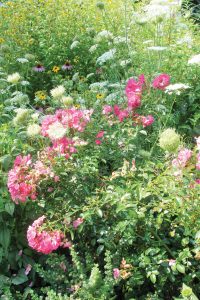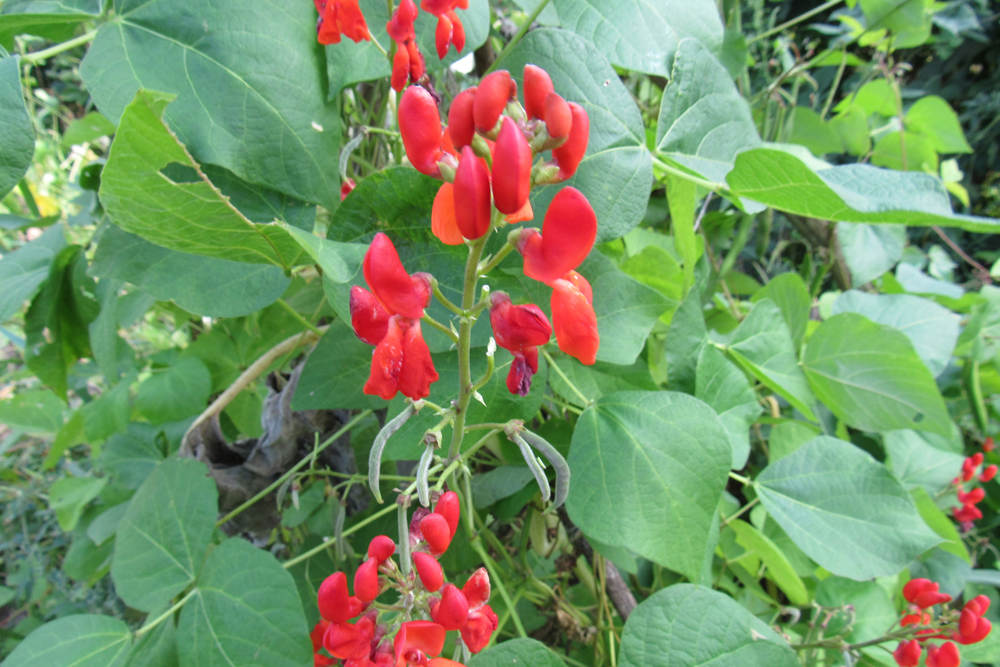A Garden of Virtues

Working at a local Cooperative Extension office means I get to see local gardeners and homeowners who come in seeking advice and answers to gardening questions.
Recently, a family was concerned that they might have giant hogweed – a noxious invasive plant with sap that can cause severe burns when it comes in contact with human skin.
The plant in question turned out NOT to be giant hogweed, but Queen Anne’s Lace – a common wildflower which has naturalized itself in North America. The white lacy blooms are sometimes used in flower bouquets.
The family was encouraged to remove the Queen Anne’s Lace by hand from their garden if they wanted to remove it, but oftentimes, people want a quick, easy and painless solution to what they perceive to be a problem.
Queen Anne’s Lace and other wildflowers, particularly natives such as goldenrod, can help support wildlife in your landscape and lure pollinators to your fruit and vegetable crops. They are garden helpers, not garden enemies.
In a New York State IPM (Integrated Pest Management) Program blog, Joellen Lampman wrote in praise of a certain level of messiness in the garden. “If we learn to live with a bit more unkemptness, we will improve the health of wild bees, wildflowers, field crops and ourselves.”
Lampman noted that a neat and non-diverse yard does not sustain the wild bees so necessary for pollination of food crops, and that increasing entropy in your landscape is as easy as not mowing every spot in your yard.
Gardeners can in fact, learn many good gardening practices from nature. Following nature is one of the basic principals of organic gardening. The virtues learned by gardening with nature are many.
Here are a few examples. Nature loves diversity. Plant drifts of many different kinds of plants (especially natives) in your yard. Combine vegetable crops with cut flowers and perennial plantings. Allow some of those native “weeds” to pop up in your plantings. Diversity in nature helps keep disease and harmful insects in check.
Embracing diversity is also good for human beings. Showing inclusion and tolerance for others can help keep our communities and neighborhoods “healthy” places to live.
Tolerance – this relates to diversity, but is another gardening virtue that can help your garden’s health as well as your relationships with other people. Don’t be too quick to judge a plant or an insect as bad and reach for an herbicide or pesticide spray to “solve” all your gardening ills.
Often times, gardening issues are complex and resolving them properly can take time and effort. If you have a low tolerance for things like swamp milkweed and goldenrod, which are often viewed as weeds – remove the plants by hand as opposed to spraying. Try to leave a few “weed” specimens for Monarch butterflies and native bees and at the same time, learn to be more tolerant of your neighbor (or your teenager)!
Patience – something we could all use more of. Gardening certainly teaches the virtue of patience – waiting for seeds to germinate, plants to grow, to bloom and bear fruit; waiting through the long winters for the bright spring bulbs which were carefully planted months before to bloom. Nature works constantly but slowly to make rich, fertile soil from dead organic material. You can take part in this process through composting organic waste and adding the rich compost back into your garden soil and lawn.
Organic material improves soil tilth and enriches your soil without chemical fertilizers.
Patience will also pay off in your human relationships – especially the ones within your immediate family!
With all the good effects of growing things, it’s no wonder that gardeners are often really wonderful people.




